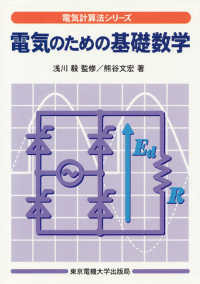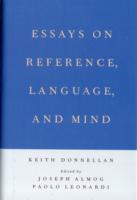- ホーム
- > 洋書
- > 英文書
- > Philosophy
Full Description
Are harmony and disruption mutually exclusive? This collection critically examines the concept of harmony and its association with perfection.
Harmony is pursued by individuals, families, societies and nations as a fundamental value. Yet it often comes at the cost of freedom, creativity and individuality. This book explores ways in which it may be misleading to regard harmony as opposed to difference or to think that harmony and disruption are independent.
Featuring examples of historically and culturally diverse perspectives of harmony, an international line-up of contributors reflect on ideas from ancient Greek, Chinese, Indian and Japanese thought. They draw on modern and contemporary thinkers and from music and design perspectives. The range of historical and cultural reflections make it possible to re-imagine the concept and practice of harmony, either by incorporating a role for disruption, or by recognising a dynamic in which disruption balances the overreach of harmony.
By including historically and culturally diverse perspectives of harmony to widen the horizons of consideration, this collection present a more inclusive understanding of this major philosophical and political concept.
Contents
Introduction
Part I. Considering Harmony
1. The Bow and the Lyre: Structural Opposition and Harmonic Tension in Heraclitus- Rick Benitez
2. The Conceptualisation of Harmony in Indian Aesthetic Thought: the Santa Rasa- Meera Baindu
3. A Principled and Context-Sensitive Harmony Within and Without: Zhu Xi's Conception of Harmony- Yat-Hung Leung
Part II. Questioning Harmony
4. The Zhuangzi: Disruptive and harmonious engagements with the world- Karyn Lai
5. Kaibara Ekken on Making Room for Disagreement: An Edo Confucian Defense of Moderate Adversariality- Matthew D. Walker
6. Harmony and Hegemony: Enactivism and Oppressive Equilibria- Lee Wilson
7. A Buddhist Critique of Harmony- James Mark Shields
8. Real harmony of the self: Enactivism and the Kyoto School- Yuko Ishihara & Katsunori Miyahara
Part III. Re-Imagining Harmony
9. Strong Harmony- Chenyang Li
10. The Harmony of Opposites in Design and Philosophy- Derek Lomas & Haian Xue
11. Music and the existential significance of harmony- Goetz Richter
12. Making Harmony Safe for Democracy- Avery Kolers
13. Constitutional Dialogue as Active Confucian Harmony- Sungmoon Kim
Index








